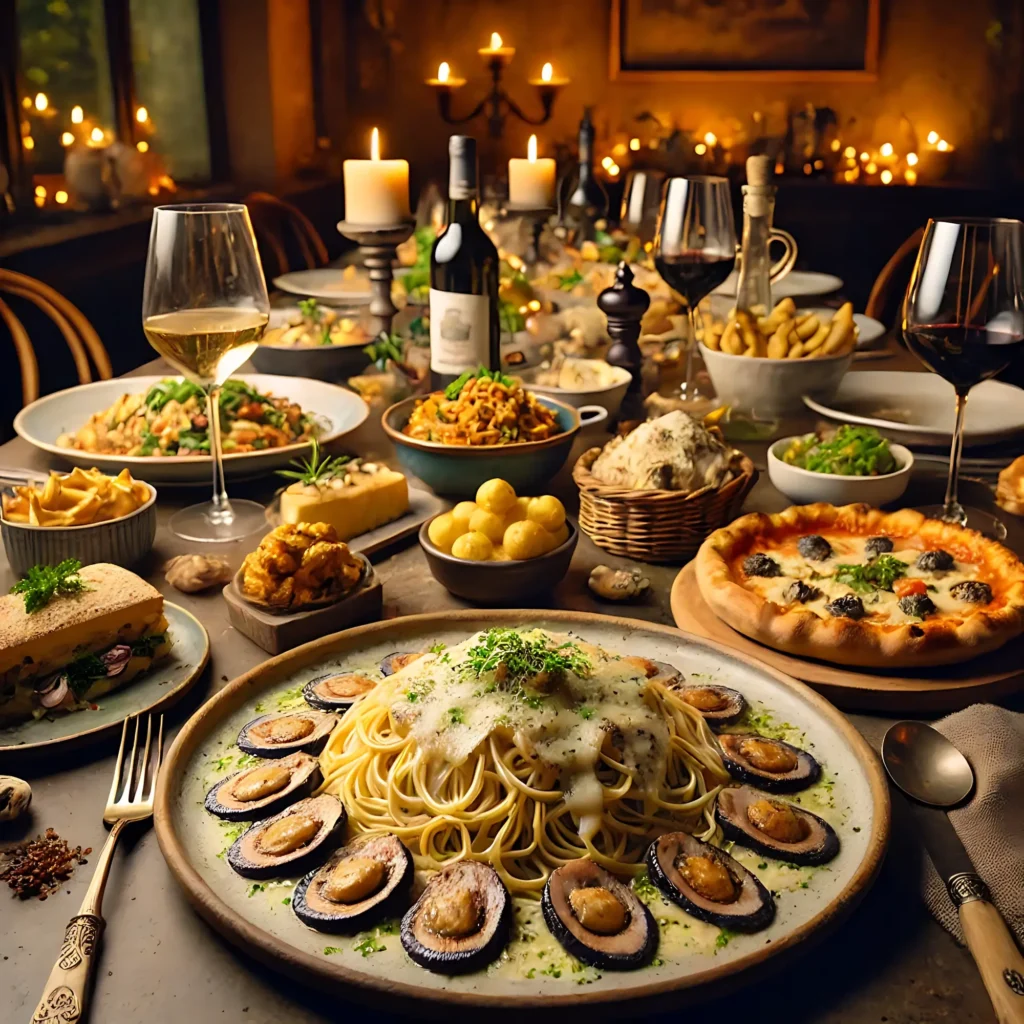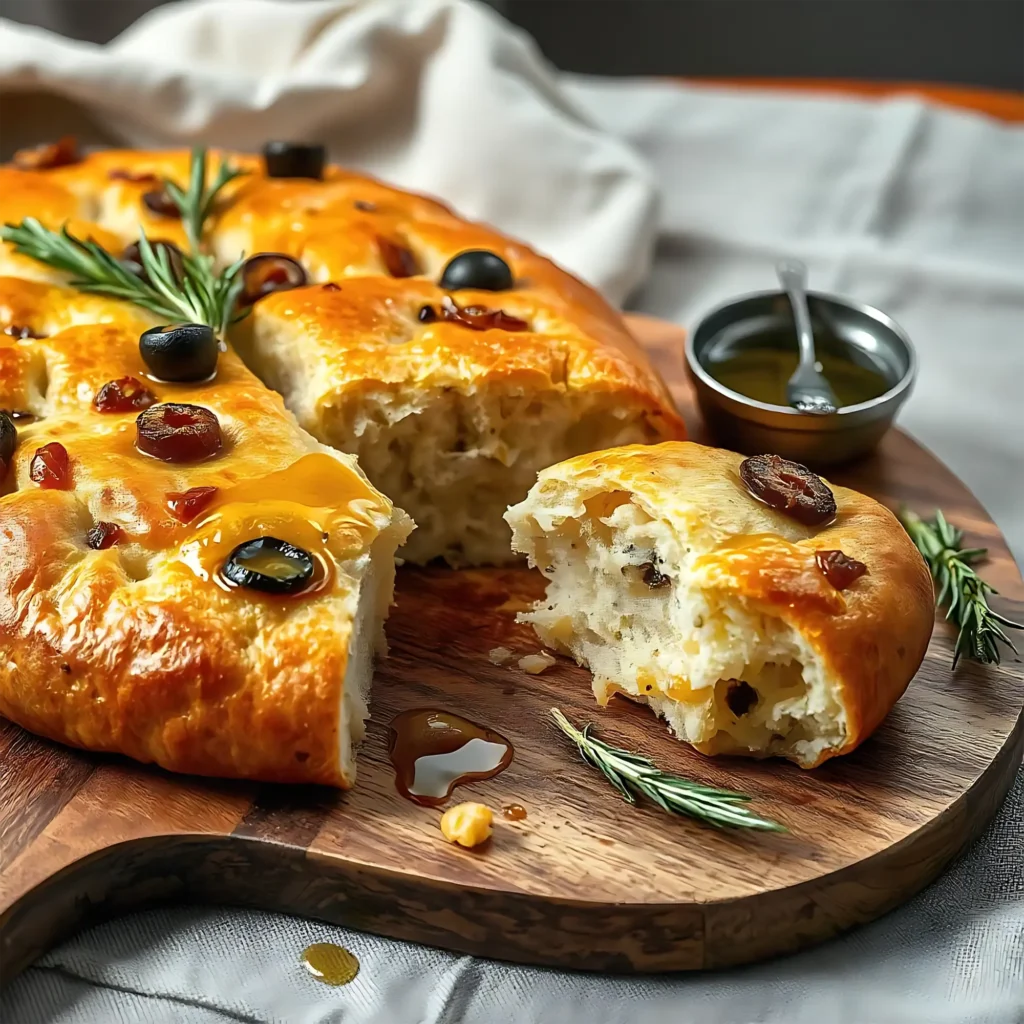The Italian cuisine is much more than a simple collection of recipes; it is a sensorial journey that reflects the history, the culture and the passion of a country that has conquered the world with their flavors. From the rolling hills of Tuscany to the shores of Sicily, each region of Italy brings his unique touch to a kitchen that is characterized by its simplicity, freshness and love for quality ingredients.
Who has not succumbed to the aroma of a freshly baked pizza, the creaminess of risotto, or the perfect balance of tiramisu? These dishes, along with many others, have crossed borders and have become emblems of the international cuisine. But beyond enjoy them at restaurants, what if we learn how to prepare them at home?
In this article, we will explore 10 Italian dishes that conquer the palate and we will guide you step by step so you can recreate them in your kitchen. From classics like the Margherita Pizza and the Spaghetti alla Carbonara, to sweet treats such as Tiramisu and Cannoli Siciliani, you'll discover that the magic of Italy also can be enjoyed at your table. So, it prepares your utensils and let yourself be carried away by the taste of Italy!
Recipes
Discover the 10 Dishes of the Italian Cuisine that you Must Try (and its Secret Ingredients)
1. Pizza Margherita
– History and origin: The Margherita Pizza is one of the icons most renowned Italian Cuisine. He was born in Naples in 1889, when the pizzaiolo Raffaele Esposito created this masterpiece in honor of queen Margherita of Savoy. Their colors (red tomato, white mozzarella and green basil) represent the Italian flag.
– Main ingredients: Pizza dough, fresh tomato sauce, buffalo mozzarella, fresh basil leaves and extra virgin olive oil. The key is in the quality of the ingredients, a hallmark of Italian Cuisine.
2. Spaghetti alla Carbonara
– History and origin: This classic of the Italian Cuisine has its roots in Rome, although his exact origin is a matter of debate. Some say that it was created by coalfish (hence its name), while others attribute it to american soldiers during the Second World War. What is certain is that its combination of flavors is simply irresistible.
– Main ingredients: Spaghetti, fresh eggs, Pecorino Romano cheese, pancetta or guanciale (cheek of pork, black pepper and salt. The creaminess of the sauce is achieved without the need for cream, a detail that defines the authentic Italian Cuisine.
3. Lasagna alla Bolognese
– History and origin: A native of the region of Emilia-Romagna, the Lasagna alla Bolognese is a dish that represents the heart of the Italian Cuisine. His version more traditional includes sheets of fresh pasta, ragu bolognese, and besciamella, creating a perfect balance of textures and flavors.
– Main ingredients: Sheets of pasta for lasagna, ragu bolognese (ground beef, tomato, carrots, celery, and onion), besciamella, cheese Parmigiano-Reggiano, and mozzarella. Each layer is a celebration of Italian cuisine.
4. Risotto alla Milanese
– History and origin: This risotto gold is a treasure trove of Italian Cuisine who was born in Milan. Legend has it that its color is due to the saffron, an apprentice of the painter added as a joke during a wedding in the SIXTEENTH century. Today, it is a dish elegant and comforting.
– Main ingredients: Arborio rice or Carnaroli, saffron, meat broth, or vegetable, onion, white wine, butter, and Parmigiano-Reggiano. Its creamy texture is an example of the mastery of Italian.
5. Tiramisu
– History and origin: This dessert, whose name means "pick me up" or "give me power", is one of the most famous Italian Cuisine. Although its exact origin is disputed between the regions of Veneto and Friuli-Venezia Giulia, its popularity is undeniable in all of the world.
– Main ingredients: Biscuits de soletilla (savoiardi), espresso coffee, mascarpone, eggs, sugar, and cocoa powder. Its combination of flavors and textures make an unforgettable dessert.
6. Ossobuco alla Milanese
– History and origin: This traditional dish of Milan is an example of the richness of Italian Cuisine. The Shin, which means "bone with a hole", refers to the knee joint of beef, a cut, juicy and full of flavor that it is cooked slowly to achieve a tender texture.
– Main ingredients: Slices of beef with bone, white wine, beef broth, carrot, celery, onion, tomato and gremolata (lemon, garlic and parsley). Is usually served with risotto alla Milanese.
7. Focaccia
– History and origin: The focaccia is an Italian flatbread that has conquered the world thanks to its versatility and flavor. A native of the region of Liguria, is a staple of Italian Cuisine that can be enjoyed as a side dish or as a base for additional ingredients.
– Main ingredients: Wheat flour, water, yeast, extra virgin olive oil, salt and herbs like rosemary. Its crunchy crust and crumb fluffy are irresistible.
8. Panna Cotta
– History and origin: This dessert is creamy and delicate has its roots in the north of Italy, especially in Piedmont. Its name means "cream cooked" and is an example of the elegance of the Italian Cuisine in its most simple form.
– Main ingredients: Cream, sugar, vanilla and gelatin. It is usually served with a sauce of red fruits, caramel, adding a touch of freshness and contrast.
9. Cannoli Siciliani
– History and origin: The cannoli are one of the desserts that is most evocative of Sicily, and of all the Italian Cuisine. Its origin dates back to the arab period in the island, and their tube-shaped crispy ricotta cheese sweetened is simply iconic.
– Main ingredients: Fried dough in the shape of a tube, ricotta from sheep, icing sugar, candied fruits and pistachios. Every bite is a trip to Sicily.
10. Gelato
– History and origin: Gelato is the Italian version of the ice cream, but with a smoother texture and a more intense flavor. It is a symbol of Italian Cuisine that dates back to the Renaissance, when Italian chefs perfected their technique.
– Main ingredients: Milk, cream, sugar and fruit or natural ingredients such as chocolate, vanilla, or nuts. Its lower air content makes it more creamy and tasty ice cream traditional.
General tips to Master Italian Cuisine in your Kitchen
The Italian Cuisine is synonymous with passion, tradition and quality. To recreate authentic Italian flavors at home, do not simply follow the recipes to the letter; it is also crucial to understand a few basic principles that define this kitchen. Here we will share with essential tips for your Italian dishes shine as a true nonno (grandfather in Italian).
1. Quality ingredients: The Basis of All
In Italian Cuisine, the ingredients are the protagonists. Choose always fresh and of the best quality. For example:
– Uses ripe tomatoes for sauces.
– Choose cheeses as authentic as the Parmigiano-Reggiano cheese, or mozzarella cheese.
– Prefer the extra virgin olive oil for a touch of flavor and authenticity.
2. Simplicity is the Key
One of the best kept secrets of Italian Cuisine is its simplicity. Less is more: don't overload your dishes with too many ingredients. Let the natural flavors shine by themselves. For example, a good pasta you only need olive oil quality, fresh garlic and a touch of chilli.
3. Master the Basic Techniques
Some techniques are essential to achieve authentic Italian dishes:
– Al dente: cook the pasta until it is firm to bite her. It is a hallmark of Italian Cuisine.
– Sofrito perfect: Learn how to cook, simmer the onion, garlic, carrot and celery to create bases full of flavor.
– Reduction of sauces: Kitchen sauces simmer to concentrate the flavors.
4. Balance of Flavors
The Italian Cuisine is characterized by its perfect balance between salty, acidic and sweet. For example:
– Combines the acidity of the tomato and the sweetness of the onions in a ragout.
– Add a touch of salt to the water for the pasta to highlight your taste.
– Used a splash of white wine to balance sauces and stews.
5. Traditional Accompaniments
Any Italian dish is complete without its accompaniments classic:
– Serve the pasta with a generous grated cheese Parmigiano-Reggiano.
– Accompanies the risotto with a glass of white wine for an Italian, as a Pinot Grigio.
– Don't forget the Italian bread, such as focaccia or ciabatta, to dip in sauces and oils.
6. Essential Tools
To dominate the Italian Gastronomy, make sure to have these tools in your kitchen:
– Large pot to cook pasta with plenty of water.
– Non-stick pan for risottos and sauces.
– Cheese grater to add the final touch to your dishes.
– Roller to prepare dough, fresh pasta, or pizza.
7. Experiment with Local Ingredients
If you can't find specific ingredients, don't worry. The Italian Cuisine is also adapts. For example:
– Replaces the guanciale by bacon in the carbonara.
– Used cream instead of mascarpone for the cream (though don't say it aloud in Italy).
8. Enjoy the Process
The Italian cuisine is not only about the end result, but also about the love and dedication you put into each step. Take your time, enjoy the process and share your creations with family and friends. After all, the Italian Cuisine is synonymous with sharing and celebrating.
Of course! Here you have the development of the points 4 and 5, following the same line of action as an expert copywriter food and SEO, with a tone attractive, useful, and optimized for search engines. The key word "Italian Cuisine" is built in a natural way, and strategic.
Take your Italian Experience to the Next Level
If you've already fallen in love with the Italian Cuisine, and you want to delve into your dining experience, here are some tips extra to bring your dishes to the next level:
1. Utensils that Make the Difference
– Machine for making pasta: If you are passionate about fresh pasta, invest in a manual machine to create your own fettuccine, tagliatelle or ravioli.
– Stone for pizza: To achieve a pizza with a base of crunchy and perfect, a stone for pizza is indispensable.
– Knife sharp: A good knife, a chef will help you to chopping herbs, cutting vegetables and preparing ingredients as a true nonno.
2. Ingredients Hard to Find and its Substitutes
– Guanciale: If you do not find this cured meat, you can use pancetta or bacon as an alternative.
– Mascarpone: For the tiramisu, you can substitute with a mixture of cream cheese, and cream.
– Marsala wine: In recipes like chicken Marsala, you can replace it with dry white wine and a pinch of sugar.
3. Side dishes that Elevate your Dishes
– Italian wine: Learn how to pair your dishes with wines such as Chianti, Prosecco or Barolo. Each Italian region has its own gem wine.
– Italian bread: to Accompany your dishes with focaccia, ciabatta or grissini (bread sticks, crisp).
– Oils and vinegars: Experience with olive oils flavoured (with truffle, lemon or chili) and balsamic vinegars from Modena to give a touch of gourmet.
4. Resources to Learn More
– Books of the Italian cuisine: Titles such as "The Silver Spoon" or "Essentials of Classic Italian Cooking" by Marcella Hazan are great for delving into Italian Cuisine.
– Online courses: Platforms as a MasterClass or YouTube offer tutorials of Italian chefs who will teach you from the basics to advanced techniques.
– Travel culinary: If you have the opportunity, visit Italy and participates in a cooking class local. Nothing compares to learn directly from the masters.
5. Share your Passion for the Italian Cuisine
– Organising a theme dinner: Invite your friends to an Italian night with music, wine and, of course, the dishes you've ever learned to prepare.
– Post your creations: Share photos and recipes on social media using hashtags such as GastronomíaItaliana or CocinaItaliana. It inspires others to cook!
– Gives Italian flavors: Prepare jars of homemade tomato sauce, bottles of flavoured olive oil or boxes of cannoli as gourmet gifts.
Conclusion: The Magic of the Italian Cuisine on your Table
The Italian Cuisine is much more than a form of cooking; it is a celebration of life, family, and the authentic flavors. Throughout this article, we have explored 10 most emblematic dishes that conquer palates all over the world, from the classic Margherita Pizza up the delicious Tiramisu. Each of these dishes has a history, it reflects a region and, above all, invites you to share unforgettable moments around the table.
Prepare these dishes at home not only about the Italian culture, but also allows you to experiment with fresh ingredients, traditional techniques, and a lot of love for the kitchen. Remember that the Italian Cuisine is not about perfection, but of passion and enjoyment. So, do not be afraid to make any mistakes and let your creativity flow!
Now that you have the tools, tips, and recipes, it's time to put on your apron and start cooking. Invite your loved ones, opened a bottle of Italian wine and let yourself be carried away by the magic of Italy. ¡Buon appetito!


